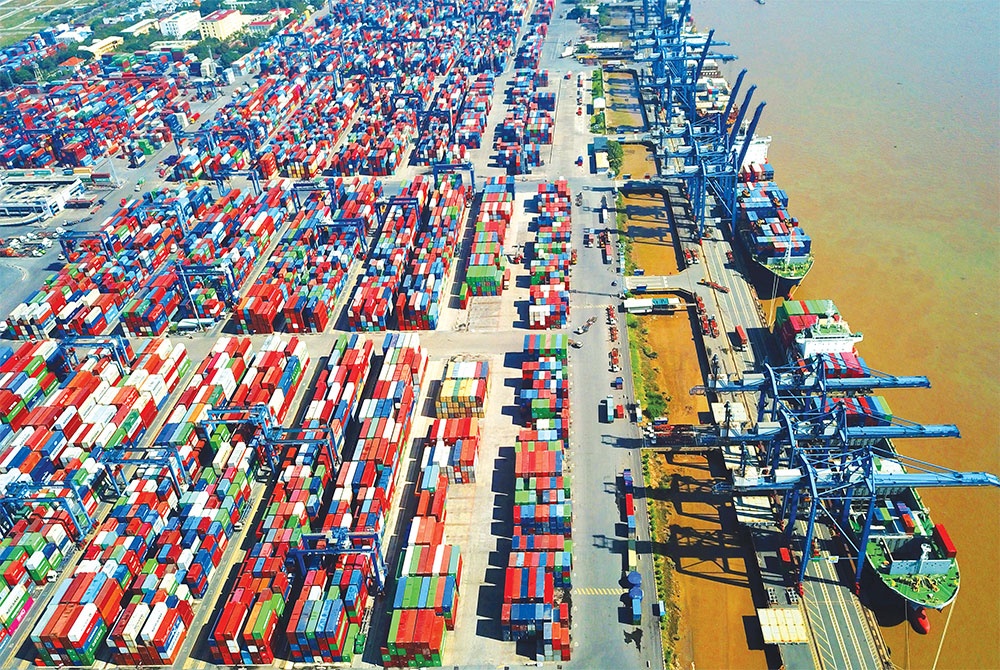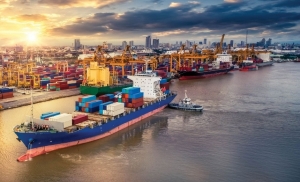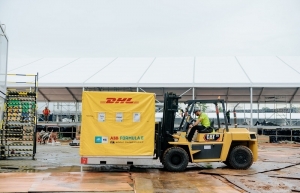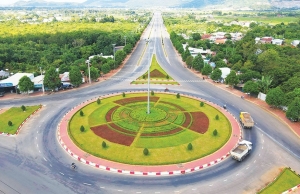Logistics investors heat up the market
 |
| illustration photo/ Photo Le Toan |
The very first logistics centre from Vietnam-Singapore Industrial Parks (VSIP) is now being constructed in the south-central province of Quang Ngai, and will be completed and put into use by the end of this year.
Being built according to Lotus standards of the Vietnam Green Building Council, the 6-hectare Sembcorp Logistics Park will boast three modern single-storey warehouse blocks.
Singapore’s Sembcorp Development, a wholly owned subsidiary of Sembcorp Industries, and its state-owned joint venture partner in Vietnam, Becamex IDC Corporation, in August also announced the addition of four new VSIPs.
According to Charles Chong, director of Sembcorp in Vietnam, the country has developed strongly in recent years and will continue to be an important manufacturing country in the Asian region.
“With the positive growth momentum of production activities and investment attraction, along with the government’s infrastructure upgrade plan, the central region promises to become the next development region in the country,” Chong said.
In September, VSIP commenced the development of VSIP Can Tho in Vinh Thanh district. It will span 900ha and create jobs for 100,000 workers when complete, attracting $3.5 billion in investment.
Meanwhile, after the Cainiao P.A.T Logistics Centre with an area in Ben Luc district of the Mekong Delta province of Long An came into operation in mid-2022, Alibaba Group has marked a new step in the race to expand market share in the logistics field with its member company Cainiao Network, which continues to develop a second logistics chain in Trang Bom district in the southern province of Dong Nai.
This project was approved by Dong Nai People’s Committee earlier this year.
According to Xing Zhang, general director of Cainiao Network Vietnam, the Dong Nai Smart Logistics Centre has a total area of 16.8ha. “With high-standard logistics facilities, the centre will serve as a regional distribution hub to support logistics activities in the Southern Key Economic Region. We believe that Cainiao Dong Nai will help businesses take advantage of their competitive advantage to achieve higher growth,” said Zhang.
Meanwhile, in mid-September, Frasers Property Vietnam and Gelex Group started construction of Yen Phong 2C Industrial Centre in the northern province of Bac Ninh, with 34,500sq.m of ready-built factories and high-quality logistics. This project will be put into operation in 2024.
Frasers Property Vietnam currently owns more than one million square metres of factories and warehouses in key industrial areas in both the south and north and is accelerating investment in new projects.
With the growth rate of import-export and e-commerce always at double digits, Vietnam is becoming an attractive destination for logistics activities in the Asia-Pacific region.
According to Tran Thanh Hai, deputy director of the Foreign Trade Agency under Ministry of Industry and Trade, in recent years Vietnam’s logistics industry has made significant progress with average growth of 14-16 per cent per year, with a scale of $40-42 billion per year.
“The number of businesses and the quality of logistics services are increasing, contributing significantly to the result of import and export of goods reaching an all-time high of $732.5 billion in 2022, confirming positioning Vietnam’s important position on the international trade map,” Hai said.
According to a World Bank Report published in 2023, Vietnam ranks 43rd in the logistics efficiency index, and among the top five countries in ASEAN.
Michael Kokalari, director of Macroeconomic Analysis and Market Research at VinaCapital, said that the rapid growth of the logistics industry in Vietnam is sustainable, due to the continuous expansion of the manufacturing sector driven by the production of high-tech products.
“The continuous influx of foreign capital has helped build a foundation for Vietnam’s industry that is essentially guaranteed for many years to come. Vietnam also is one of the destinations to benefit from the China+1 strategy of multinational companies,” Kokalari said.
He confirmed that there are three potential strategies: investing in top logistics companies to develop them into an integrated platform that can provide customers with cost advantages; identifying specific assets that require capital to upgrade and driving growth by increasing operational efficiency; or via mergers and acquisitions.
“Also, an attractive sector in Vietnam’s logistics industry is customs clearance services, in which well-qualified agencies can speed up the customs clearance of domestic and foreign goods by ensuring compliance with complex regulations is required,” he added.
 | Shipping firms eye rosier future Vietnam's import-export sector is showing signs of improvement amid rising demand from major markets such as the United States and Europe. Since early July, world markets have witnessed a recovery in sea freight prices, a signal to many that the shipping industry has overcome the challenging times of the previous eighteen months. |
 | Logistics groups go green to add to net-zero goals Logistics enterprises are gradually participating in supporting the green production and circulation of goods in the country, as well as exporting and importing with more sustainable criteria. |
 | Ba Ria-Vung Tau lacking inter-regional connectivity Ba Ria-Vung Tau province needs a complete trade and logistics ecosystem to improve connectivity with the southeastern region. |
What the stars mean:
★ Poor ★ ★ Promising ★★★ Good ★★★★ Very good ★★★★★ Exceptional
Related Contents
Latest News
More News
- Global partnerships key to Vietnam’s IFC development (December 26, 2025 | 16:18)
- Vingroup pulls out of bid to invest in North-South high-speed railway (December 26, 2025 | 11:42)
- Strengthening supply chains through trade promotions and customs reform (December 24, 2025 | 14:00)
- PM orders investment model for North–South high-speed rail (December 22, 2025 | 17:43)
- LS Eco Energy to invest in Vietnam rare earth sector (December 22, 2025 | 17:31)
- Government moves to establish International Financial Centre (December 21, 2025 | 21:00)
- Vietnam's IFC to target global investment flows (December 21, 2025 | 18:00)
- Two national hospitals expand capacity with new facilities (December 20, 2025 | 09:00)
- Ha Tinh breaks ground on major Vingroup industrial and energy projects (December 19, 2025 | 18:24)
- EVN launches major power infrastructure projects nationwide (December 19, 2025 | 18:17)

 Tag:
Tag:




















 Mobile Version
Mobile Version